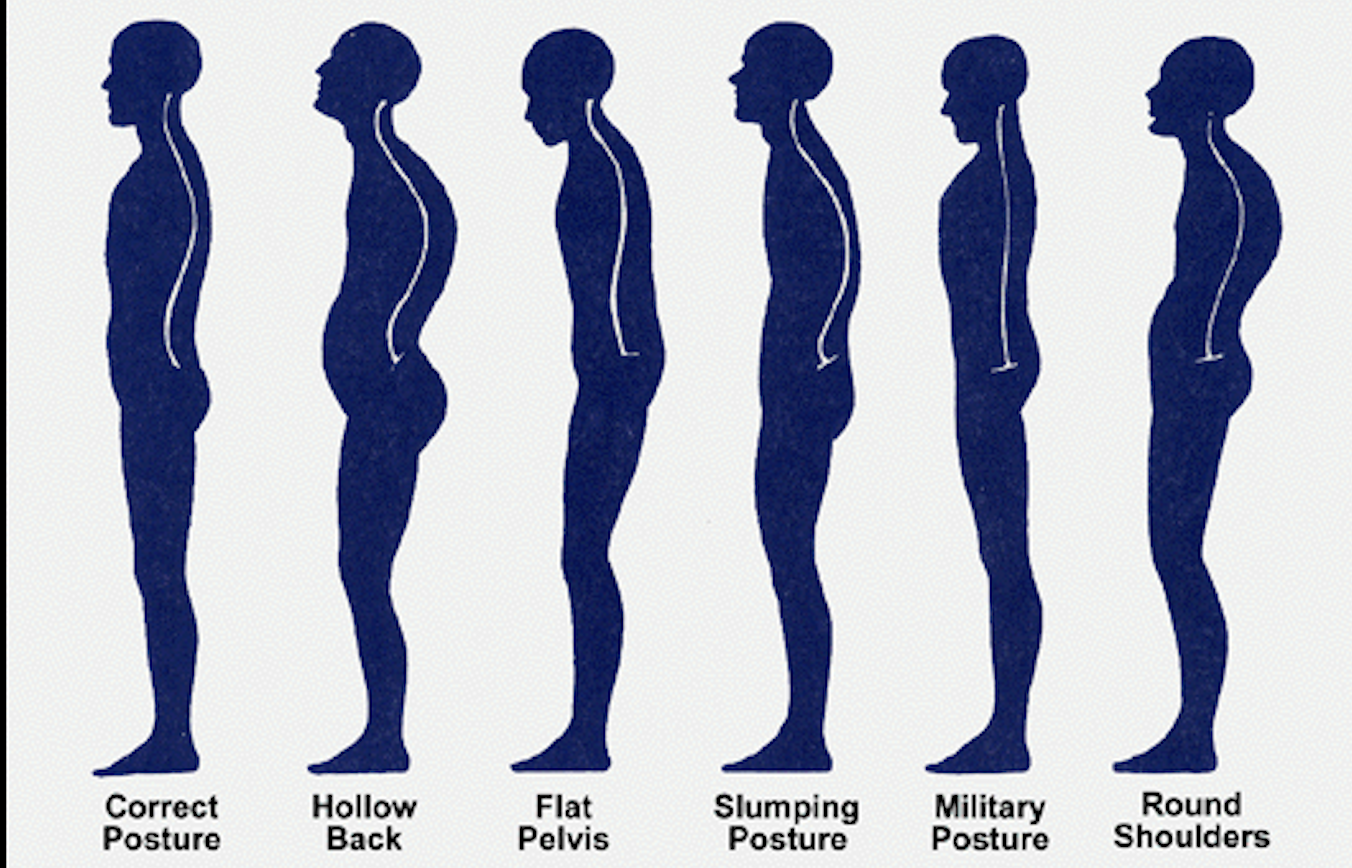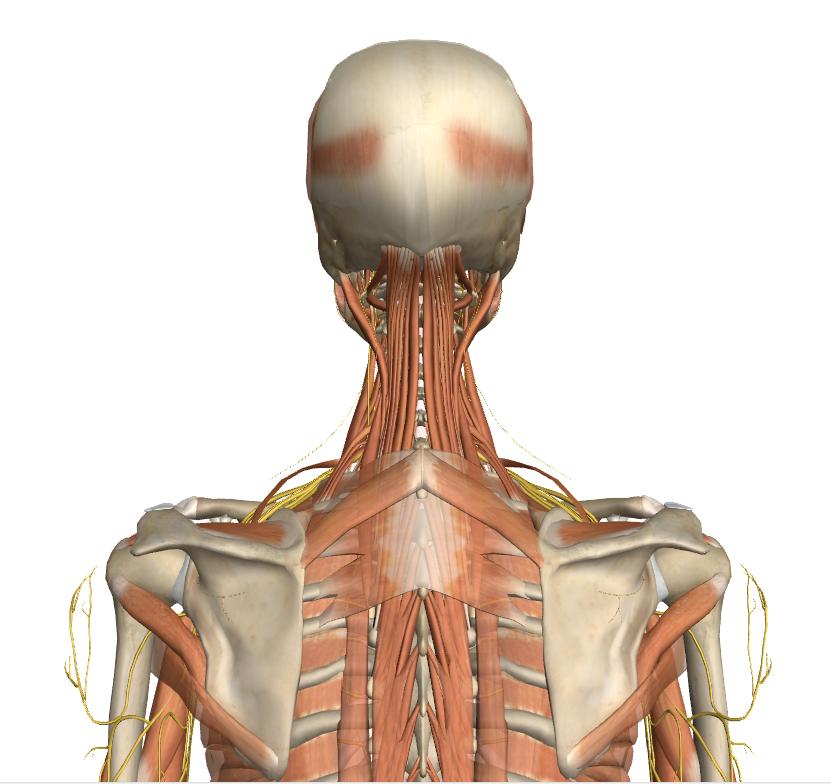This essay is all about the muscles of the back, since we talked about the spine in my last segment. Since I get to talk all about shoulders at PASIC (woohoo!!!) on Friday, I thought a good connection between spine structure and the shoulder joint would be about the muscles of the back that help to protect both.
Though I've never experienced it severely first-hand, it seems like there is nothing worse than constant back pain. Ask anyone who has dealt with it and they will say that you must protect your back so you never feel what they do. Doctors warn their patients that once they have one surgery, chances are they will need more. (This makes sense, as you can't fix one part of the long spinal structure without later needing to correct other areas.)
There's good news, though: keeping the muscles of the back strong, and freely aligning the spine, can help us lead pain and surgery-free lives.
The Latissiumus Dorsi (lats, for short) are incredibly helpful with any motion involving the shoulders, be it reaching up, pulling down, reaching to the side, even rotating the shoulder. Look at how huge they are! It makes you wonder how we ever get shoulder pains when such a big muscle "has our backs," right?? Sorry, feeling extra punny today. But in all seriousness, that is a big muscle that protects the spine and supports the erector spinae.
A back that slouches forward, causing the head to tip down and back, will develop painful pinching near the neck, and quite possibly down in the sciatic nerve as well. (To review the sciatic, you can check out my previous essay here.)
From the diagram above, the postures that are particularly alarming are the ones labeled "Hollow Back," "Slumping," and "Round Shoulders." Notice how the head falls backwards in each example. When this happens, not only are we putting tons of pressure on our cervical vertebrae, but we are shortening the neck muscles around them, which over time will prevent them from supporting properly and result in the perception that standing "correctly" is "harder" than slouching, when really, the opposite is always true.
Here's a view of the right side of the neck.
And here's an AWESOME view of the deep muscles around the cervical spine.
The small muscles of the neck support the weight of the head, which weighs around 10 pounds, possibly more depending on your genetics. Look how tiny they are! No wonder they get sore and hurt and need massaging.
The idea of bad posture is not only problematic from a pain standpoint, but it also makes us think that "good posture" is hard to come by, that we have to hold ourselves up. More good news: we don't.
To find a long spine and support it with muscle:
- Picture your vertebrae (no need to move or manipulate them, just think)
- Imagine air pumping into the disks between your vertebrae (I like to start in the middle of my back and work up, then down)
- If your body wants to move, or stretch up -- let it! :)
If it's working, you'll feel a few things:
1. Taller.
2. Like you aren't "trying" to be taller.
3. Like your neck just got longer, like your head is balancing.
4. Your shoulders may drop.
5. Your jaw may loosen.
A phrase that is often used in Alexander Technique is to "free up," which is what the previous activity is designed to do. This is a great phrase for reminding us that alignment does not take physical effort, only mental effort.
Though I've never experienced it severely first-hand, it seems like there is nothing worse than constant back pain. Ask anyone who has dealt with it and they will say that you must protect your back so you never feel what they do. Doctors warn their patients that once they have one surgery, chances are they will need more. (This makes sense, as you can't fix one part of the long spinal structure without later needing to correct other areas.)
There's good news, though: keeping the muscles of the back strong, and freely aligning the spine, can help us lead pain and surgery-free lives.
Waterfall Muscles
_en.jpg) |
| source |
_en.jpg) |
| source |
It's beautiful the way the muscles of the back cascade down, isn't it? The first photo above is a superficial view of our muscles, or what we can easily see through the skin. You're looking at the lats, the trapezius, the deltoid, and other muscles. It's actually the second picture that is far more interesting, as it shows us the underlying layer of muscle tissue. Here, we are dealing with smaller forms and more detailed attachment sites, which essentially translates to: this is where we can get hurt.
The muscle layer of the second photo shows the long erector spinae muscles, which begin as the white "V" above the butt and travel up the length of the spine. (There are separate names for each little muscle in this group, but for our purposes, all we need to visualize is the long line of muscle. Sorry, doctors everywhere.).
When we think about aligning the spine to arrive at a free, lengthened (I'm avoiding the word "straight") place, the muscles that can help us support that are those of the erector spinae. They are helped by the abdominals and the lats, but those groups are supplemental.
There are great sources for exercises and stretches to strengthen the erector spinae, like this article from livestrong.com.
 |
| source |
What happens to muscles when we live with a collapsed spine?
A back that is stiff, or trying to be stick-straight, will end up sore because the spine is a curved structure, so the back should have some type of curve to it, be it a shallow one. A back that slouches forward, causing the head to tip down and back, will develop painful pinching near the neck, and quite possibly down in the sciatic nerve as well. (To review the sciatic, you can check out my previous essay here.)
 |
| source |
Here's a view of the right side of the neck.
 |
| source |
 |
| source |
The small muscles of the neck support the weight of the head, which weighs around 10 pounds, possibly more depending on your genetics. Look how tiny they are! No wonder they get sore and hurt and need massaging.
The idea of bad posture is not only problematic from a pain standpoint, but it also makes us think that "good posture" is hard to come by, that we have to hold ourselves up. More good news: we don't.
To find a long spine and support it with muscle:
- Picture your vertebrae (no need to move or manipulate them, just think)
- Imagine air pumping into the disks between your vertebrae (I like to start in the middle of my back and work up, then down)
- If your body wants to move, or stretch up -- let it! :)
If it's working, you'll feel a few things:
1. Taller.
2. Like you aren't "trying" to be taller.
3. Like your neck just got longer, like your head is balancing.
4. Your shoulders may drop.
5. Your jaw may loosen.
A phrase that is often used in Alexander Technique is to "free up," which is what the previous activity is designed to do. This is a great phrase for reminding us that alignment does not take physical effort, only mental effort.
For Percussionists
The need for a healthy back is obvious for us as players. All of our instruments highlight tension there, just like they do shoulders. Whether playing drumset, timpani, hand drums, marimba, cymbals, or any of the other 40 billion instruments we learn, an unhappy back creates ugly sounds that we don't like. (And it's even more troublesome that we might be in pain while we make them!)
The spine and back, being the center of the body in a myriad of ways, are two areas that deserve special attention. We're lucky that we don't have to consciously always think about "how" to stand up, but we can check in with ourselves a few times every day to see if we are "freeing up" and aligning the spine.
Do it with love and do it with care - our backs work much harder than we do. :)
I hope you are all able to join me this Friday at PASIC for my masterclass about shoulder anatomy! There's going to be a kinesthetic party going on at 4pm in Room 217 - bring some mallets to feel first-hand the freedom of happy shoulders. :)
This is very nice post my friend!! From a couple of days I have been suffering from Back Muscle pain. I think it is getting serious now so I want to consult a good acupuncturist for treatment. Do you know about any professional acupuncture-mississauga clinic?
ReplyDeleteThanks for reading, and the for the comment. I don't have first-hand experience with acupuncture, but have friends that swear by it. I'm a big fan of addressing causes while relieving symptoms, so I hope you are able to get free of pain and figure out how it got there in the first place. Good luck!
ReplyDeleteExcellent information on your blog, thank you for taking the time to share with us. Amazing insight you have on this, it's nice to find a website that details so much information about different artists. boynton beach chiropractor
ReplyDeleteThanks for reading, Robert, and for the comment. I'm amazed at how complicated the body is every time I research further.
DeleteI am so glad I read this post. After years of working in an office and spending my days hunched at a computer, I am no stranger to back pain. The pictures you included are a great visual reminder for me to keep focused on realigning my spine. I, too, would like to avoid surgery and stay healthy.
ReplyDeleteAgnes Lawson @ Pain Relief Experts
Thanks for reading, Agnes! I've had a career change that now doesn't require as much computer work, and I've noticed a positive effect. Hopefully we can both stay aligned and healthy. :)
DeleteThanks for sharing so much important facts about back pain. I think back pain is usually caused by lifestyle habits, like working long hours at a desk job or sitting with poor posture on the couch after. I use IASTM Tools for Sore Muscles whenever I feel pain in my back.
ReplyDelete